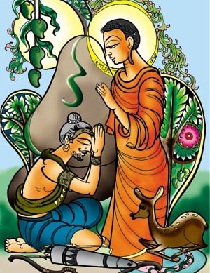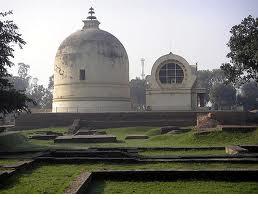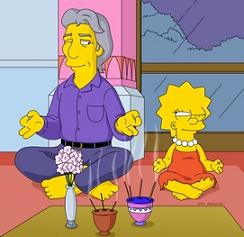Analysis by Murray Hunter January 1, 2014
One major question that should be asked is whether the enormous growth in psychology based therapies are just a case of supply to meet a demand?, and more importantly, should anxiety and alienation always be treated with psychiatric intervention, without looking at alternatives where individuals take on more self-responsibility for coping with their own emotions.
Meanwhile over the new year break, hundreds of thousands of mainly women took time to attend prayer and meditation retreats in Buddhist temples across Thailand. In a prayer hall one could hear the anticipatory silence while waiting for the monk to take his place in front of the congregation. This air of serenity would occasionally be interrupted by the ring of a mobile phone which would prompt a lady to dash out of the hall and answer a call.
Many women in Thailand find the time off to go to a temple and live in Spartan conditions for a period of a few days to a few weeks. They hope that this will relieve the stress they build up during everyday life, so they can go return home ‘fresh and recharged’. Thai women serve their children, husband, parents and parents in-law, and often pursue a career at the same time.
Many find some time in the temple for prayer and meditation very beneficial. Buddhism is the first philosophy to recognize the arising of psychosis in people. Buddhism is not a conventional religion, but rather a philosophy based on the four Noble truths and Eight-Fold Path.
The Four Noble Truths are: 1. Our delusions of self cause our suffering, 2. Suffering is a fact of life resulting from our attachment to what we desire, 3. If we extinguish our attachment, we reduce our suffering, and 4. By following the Eightfold Path and developing wisdom, we can alleviate our suffering.
The Eightfold path consists of right understanding, right intention, right speech, right action, right livelihood, right effort, mindfulness and right concentration.
Within Buddhist philosophy, consciousness and metaphysics are combined in the concept of Pratîtyasamutpada or dependent origination. This is where reality is seen as an interdependent timeless universe of interrelated cause and effect. A human’s existence is interwoven with the existence of everything else and the existence of everything else is interwoven with the human’s existence in a mutually interdependent way. Because this concept is past, present and future, everything in the universe is only transient and has no real individual existence.
This is a very important concept because it is only our ability to free ourselves from attachment and delusion about our sense of self and values unconsciously placed on others, will we be able to see the world as it really is, rather than what we wish it to be. In fact our view of self and existence is created through our clinging and craving which blinds us to the reality of dependent origination, a concept describing interrelatedness. Buddhism is about transcending these delusions, and the patterns and pathways we are locked into, so human perception is clear and unbiased. According to the philosopher Alan Watts, this makes Buddhism an ethical philosophy of life, rather than a religion in strict terms.
Suffering, which comprises desire, craving, greed, and attachment can be considered symptoms of psychosis which the retreats are focused upon eradicating.
Practice of the Eightfold Path may assist in raising consciousness to a completely non-dualistic view of subject and object and assist a person avoid further suffering.
The Abhidhamma Pitaka, the last of three parts to the Pali Cannon (the scriptures of Theravãda Buddhism) describes the structure of the human mind and perception with amazing accuracy to the accepted views of modern neuro-science today, some 2,300 years before the invention of PET and MRI, which has allowed neuroscientists to map the human mind. Siddhartha Gautama, more commonly known as the Buddha practiced modern psychology techniques more than 2,000 years before psychology as a discipline was invented.
Monks have been performing the role of psychology in Thai society for many hundreds of years. Prayer and meditation sessions within temples during the morning and evening can be seen as a practical way in assisting mental health. At some monasteries, even more radical techniques are used to help people develop higher levels of self awareness, so they can deal with their emotions.
Phra Chayapon Chayaparo, the deputy Abbot of the Samangkeytamt Vipassanu Centre near Rattaphum, in Songkhla said that its very important for monks to be actively involved in peoples self education. Chayapon stated that “that the monk gets food from the people, but doesn’t give food back” is highly undesirable. Therefore it’s important for monks to give leadership. Learning can only come from within the self, and it’s up to the monks to facilitate this. Learning comes from being outside your comfort level and this has always been a very important component of Thai Buddhist practice. Consequently, what could be called a “shock treatment” is practiced at the Samangkeytamt Vipassanu Centre. These unconventional techniques guarded and handed down by forest masters are used to assist participants increase their mindfulness. Phra Chayapon proudly says that many Christians and Muslims also attend the centre to assist them develop control over their mind-flow, so they can be aware of and overcome the influences of their emotions.
Phra Chayapon explained that people with emotional problems may go to a psychiatrist, who upon consultation may prescribe a drug that inhibits or produces certain neuro-chemicals that suppress certain feelings. There are often many undesirable side effects from the drugs used to induce these mental states in people. However through chanting and meditation, many positive endorphins can be produced naturally which allow one to have a much more healthier state of mind. The advantage of doing this naturally is that through the mind exercises he teaches, people can take their own responsibility for their mental state.
Buddhism is rapidly gaining importance in the developed world, where for example according to 2011 census data, almost 2.5% of Australia’s population consider themselves Buddhist.
Among those not born as Buddhists, there is a growing fascination with Buddhist philosophies. Many are finding the ‘wisdom’ of Buddhism very alluring. Western devotees gather all around Australia in small groups like the run by the Venerable Bhikkhu Jaganatha, known as Ajarn Jag, ordained in Burma a few years ago, at the Buddhist Society of Victoria in East Malvern. These groups numbering up to 50 people each night practice paying homage to the Buddha, chanting, and meditation. There are many seeking an answer to the feeling of some aspect of ‘emptiness’ in life. Consequently, many attendees are single or divorced people who put their efforts into meditation and dharma teachings as a means to assist them develop full and happy lives. There is a large therapeutic content within the Buddhism practiced in Melbourne.
The concepts practiced in Australia tend to promote a holistic lifestyle based upon spiritual practices, diet, and exercise like yoga, which conventional religions have failed to provide. This is leading to a new form of secular Buddhism, a philosophy espoused by Stephen and Martine Bachelor, who were once a monk and nun. They now conduct retreats and seminars on a secular approach to Buddhist practice based on the early teachings of the Buddha as found in the Pali Cannon all over the world. Stephen Bachelor strongly advocates that a religion should primarily enable people see themselves, think, relate to others, act, and behave in an ethical and fulfilling way.Through meditation and practice of the Eight-Fold path, one can develop their personal self awareness and better deal with the stresses and problems of life.
So how relevant is Buddhism to therapy?
Since the beginning of the Twentieth Century, especially after World War II, there has been a growing interest in Eastern philosophy in the West. The teachings of the Abhidhamma Pitaka have inspired and influenced many psychoanalysts and psychologists, including Carl Jung, Erich Fromm, Albert Ellis, Jon Kabat-Zinn and Marsha M. Linehan. There has been a great leap forward in humanitarian and transpersonal philosophical influence in therapy. Dialogue between philosophy theorists and practitioners of East and West has led to mutually influential relationships between them. This has led to new insights into therapies and new schools of thought on both sides. Aspects of Buddhist Dharma are also incorporated in the works of Western philosophers including Caroline A. F. Rhys David and Alan Watts.There is some evidence that chanting and meditation is beneficial to the brain and can assist in coping with stress. Meditation can assist in lowering blood pressure, meditators have longer attention spans, and even reduce the progress of age related cognitive disorders.
Mindfulness practice and meditation can be seen as a practical, preventative, and empowering method to self manage mental health. This is in stark contrast to the primarily reactive way in taking medications as a corrective approach to suppress psychotic conditions. The Buddhist approach doesn’t rely on the use of medical specialists and drugs that strain the costs of national health.
The message from the recent documentary Kumare about Vikram Gandhi who impersonated an Indian Guru and builds a following in Arizona, showed that a person’s personal enlightenment and personal wellbeing, is capable of coming from within. People with guidance are capable of managing their own emotions.
The potential exists to lower the number of people on prescribed drugs in society. Mindfulness practice could go some way to lessening the stress that society is generating. For some this will work. However general society will tend to remain skeptical burying this potential within the fringes of mental health policy.
Most probably, society will still remain intent in taking drugs an attempt to relieve stress and dumping the aged with mental deterioration in aged care homes as a solution. Any change would run up against vested interests within these industries. As a result people will continue to suffer through the side effects of prescribed antipsychotic medicines and languish in aged care homes.
As Albert Einstein once said Insanity is doing the same thing over and over again but expecting different results.




